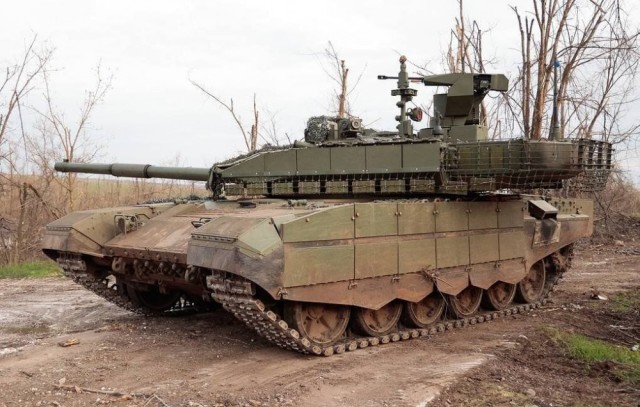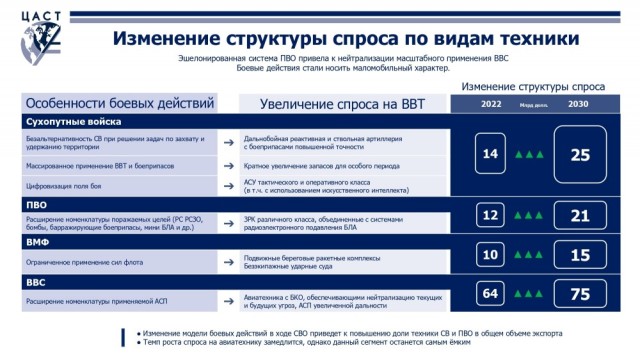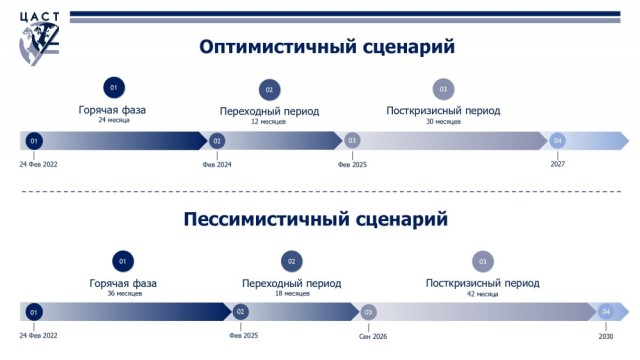Despite all the military and political cataclysms of recent times, the Center for Analysis of Strategies and Technologies (CAST) continues its activities, including in its main profile, conducting analytical and research work in the field of military-technical cooperation of the Russian Federation with foreign countries, as well as in relation to the global market of weapons and military equipment in general. Readers are offered some fragments of one of the latest studies of the CFTA with conclusions regarding the prospects for military-technical cooperation of Russia in the light of a special military operation in Ukraine - both in terms of analyzing changes in the structure of demand in the global defense market and possible Russian proposals in this market, and regarding forecasts regarding the functioning of the mechanism of military-technical cooperation of Russia in the the current stressful military conditions.

T-90M tank "model 2022" with additional improvised field modifications as part of one of the units of the Russian Armed Forces in the zone of a special military operation in Ukraine, April 2023 (c) social networksThe Special Military Operation (SVO) of the Russian Armed Forces in Ukraine has become the main factor in the domestic and foreign policy situation for Russia, and the influence of SVO on the situation in and around the country will only increase.
The SVO became the largest conventional war on the European continent after 1945 and a radical test of the pre-existing views of the leadership and theorists of the world's leading armed forces on modern warfare. Its is accompanied by the widespread use of the most modern weapons, as well as weapons that until recently formed the basis of the technical equipment of the armies of the leading states of the West and East. This thus provides an unprecedented verification by real combat experience of the entire "slice" of weapons and military equipment (IWT) the main military powers that have entered service over the past more than half a century.
Taken together, ITS thus has and will have even more in the future the most profound impact on the military construction of all significant countries and, accordingly, on the world market of military products (PVN). This will lead, according to our forecasts, to the most serious, and sometimes radical changes in the structure of procurement of military equipment, and thus, the structure of demand for it on the international market.
A feature of the fighting during the SVO was the rather rapid exhaustion of the possibility of the parties conducting maneuver warfare and the transition to positional warfare, which led to talk about a return to the "positional deadlock" and "material battles" in the spirit of the First World War. It is unclear to what extent this trend is characteristic of the entire current stage of modern military affairs or reflects the specifics of the fighting in Ukraine. It should be pointed out that the elements of attraction to positional warfare instead of maneuver have been observed repeatedly during local conflicts of recent decades, especially in the absence of a cardinal numerical and/or technological advantage on one side (the most striking example was the Iran-Iraq War of 1980-1988).
One of the main reasons for this trend is the increase in the vulnerability of the tank on the battlefield, which has been observed continuously since the Arab-Israeli war of 1973, which has eventually led to the tank actually losing the importance of the main means of breakthrough and maneuver, and, accordingly, deprived maneuverable combat operations of the main technical support. It is not yet possible to judge whether the increase in the protection of the tank (primarily due to the introduction of active protection complexes) will be able to radically change this situation. It can be assumed that this will stimulate intensive work on improving tanks and intensify purchases of the most modern and advanced tank platforms. The same can be said about the class of light armored vehicles, in which promising platforms will shift in terms of security and other characteristics (and cost) to advanced tanks.
In general, the SVO has shown the decisive role of the ground forces in the armed struggle, since only the army is able to occupy and hold territory. At the same time, the use of ground forces requires a large amount of military equipment and leads to the consumption of huge quantities of ammunition. On the other hand, it has been demonstrated that high-precision weapons and high-precision ammunition are an effective alternative to the massive and costly use of unguided ammunition, since the latter is rather a consequence of the low real military-technical level of both warring parties. In this regard, we can already observe a boom in demand for artillery and rocket-artillery complexes with high-precision ammunition and having an increased range, and on the other hand, a return to mass mobilization of ammunition of all types.
Combat experience demonstrates the importance of mass saturation of troops with tactical-level guided weapons - from modern ATGMS to light barrage ammunition. An important promising firing means can be a tactical missile in the spirit of NLOS and ALAS with a command guidance mode and an increased range, which, in principle, can assume a significant part of the role of artillery.
Digitalization and "networking" of the battlefield has become an important aspect of its, providing unprecedented capabilities for reconnaissance, targeting, control and fire destruction in real time. The massive use of global data transmission systems such as the same Starlink made it possible to make a "universal" network connection of combat units (up to machines and calculations), units and units. This will lead to a further sharp acceleration of the dynamics of the introduction of digital automated control systems and control and communication systems in the armies based on global Internet services, both military and "dual-use".
In the combat use of aviation, the SVO demonstrated the high efficiency of ground-based air defense systems, which led to the actual paralysis of large-scale combat aviation operations over the combat zone and deep into enemy territory. On the other hand, this experience also pointed to effective ways to neutralize this situation, primarily due to the widespread use of high-precision weapons, including extended-range ones. Thus, we can expect both an increase in demand for modern types of air defense systems, and the explosive introduction and procurement of high-precision aviation weapons of the entire range of applications and ranges. At the same time, the range of the weapon in many cases looks like a critical characteristic. SVO signed the final verdict on unguided aviation weapons.
Combat experience emphasized the importance of the survival of aircraft platforms when operating in "contested" airspace, which should be achieved both by improving on-board defense systems and increasing stealth. In this regard, it is important to consider the opinion of specialists of the US Air Force that current events have demonstrated the obsolescence of all fourth-generation combat aircraft, and that only inconspicuous fifth-generation fighters are able to operate effectively in the face of serious opposition from a modern enemy. Thus, it is possible to expect (and is already being observed) an intensification of the purchase of fifth-generation combat aircraft (and in the future, the sixth generation) and their replacement of fourth-generation platforms.
The explosive increase in the scale of the use of UAVs, especially small ones, demonstrated during the SVO, should also find serious development in the form of the creation of a virtually new huge segment of the market for small UAVs for special military purposes (now almost all of this segment is occupied by commercial devices) and small barrage ammunition, which finally turn into regular individual and group weapons of units.
In turn, other colossal rapidly developing segments of the market are the means of countering UAVs of all classes. At the same time, there is also a rapid evolution of air defense systems from the classic "anti-aircraft" fight to the fight against UAVs and barrage ammunition, as well as to the tasks of countering rocket and artillery weapons. This poses serious challenges to the development of air defense systems, not only in terms of fire capabilities, but also the cost of hitting the target.
The use of the fleet in its own was limited, but demonstrated the decisive nature of coastal missile systems to "prevent access" in coastal waters and closed seas, as well as the high importance of aviation. This, in our opinion, raises fundamental conceptual questions about the very principles of naval construction in such seas and waters. In essence, we can say that it makes sense to build only such ship platforms that have real combat stability and survivability in such an environment due to powerful air defense and missile defense weapons (that is, ships of the class no less than a "large frigate").
At sea, the further development of shock unmanned platforms, both surface and air and (in the future) underwater, which in the future, apparently, will replace in principle all the "small" and light forces of the fleet, was shown.
Thus, it can be pointed out that the experience of combat operations in the SVO should lead to the activation of the global market of land weapons, air defense, long-range precision missile weapons (with ranges from operational-tactical, to. potentially, strategic) and unmanned vehicles. Sales of combat aviation equipment will shift to the fifth-generation fighter segment, which, given their high cost, will continue to provide a large share of the supply of aircraft platforms in the world market of military equipment.
Assessing the political prospects of the military-technical cooperation of Russia in the light of its own, we can only state that they completely depend on the course of hostilities and, accordingly, on Russia's relations with the West in this context. It can be assumed that having proved unable to implement militarily the maximalist goals of its military operation in Ukraine proclaimed on February 24, 2022, the Russian supreme power is now looking for ways out of the conflict by preserving and consolidating the territories occupied to date and forcing Ukraine and its Western sponsors to a truce based on the territorial "status quo". To do this, Russia needs to effectively extinguish any attempts by the Ukrainian side to recapture significant occupied territories and it is necessary to finally transfer the conflict to a positional phase similar to the positional period of the Korean War in 1951-1953, while demonstrating to the West that any really possible Western efforts to militarily support Ukraine will not lead to a serious change in the current "status quo". Taking into account the Russian election cycle, the Russian authorities will probably try to end the "hot" phase of the conflict on these grounds by February 2024.
Such a scenario can be considered the most realistic and optimistic for Moscow today. In this case, it is possible to achieve some kind of truce at the front by the spring of 2024 with the subsequent phase of the "transition period", when negotiations will be conducted on some kind of peaceful settlement, an integral part of which will be the gradual lifting of at least part of Western sanctions against Russia. Such a "transitional" period can be estimated optimistically by the duration of about a year - that is, until spring-mid-2025.
It should be noted that in this period, the Russian side will continue to face both a shortage of PVN for delivery abroad (since most of the military equipment produced in the country will be directed to the accelerated restoration of the potential of the Armed Forces of the Russian Federation during a possible truce) and the acceleration of the adaptation of the system of military-technical cooperation under restrictions (new forms of payment and delivery routes, etc.).
After that, we can expect a "post-crisis" period of up to three years, when the process of lifting some sanctions, easing some currency, banking and transport restrictions, etc. will begin. In any case, even under the most optimistic scenarios, we can expect some kind of normalization of the activity of the Russian military-technical cooperation system as a whole no earlier than 2027-2028. Only by that time, in the best case, it will be possible to make a significant amount of military equipment available for supplies abroad, including new models created from the experience of military operations in the SVO, and the effective effect of a possible easing of sanctions will also manifest itself. Perhaps, the political pressure of the West on the customers of the Russian military equipment will also weaken.
It should be noted that all these ideas are based on hypothetical scenarios that are optimistic for the current Russian authorities, the feasibility of which is not obvious. A more pessimistic scenario assumes the continuation of intense hostilities in Ukraine at least until the winter-spring of 2025. In general, in our opinion, it is still most likely that the West will not go to any serious settlement with the Russian Federation without the withdrawal of the Russian side in Ukraine to the line on February 24, 2022, and this circumstance will be decisive for the dynamics of both the conflict itself and attempts to get out of it.

Changing the structure of demand in the global defense market in the light of the experience of the Russian Special military operation in Ukraine (c) TSASTPossible scenarios for the duration of the Russian special military operation in Ukraine and the processes of post-crisis settlement (c) of the CFTA


